Training Basics
1. Time in the boat, time in the boat, time in the boat – or time on a kayak erg. There is no substitute for paddling if you want to be a better or faster paddler.
2. Spend time going into the wind, downwind, beam to the wind so that you feel comfortable paddling in all directions relative to the wind and waves.
3. Practice remounts on flatwater and get proficient at it from both sides of the ski. Then become proficient at doing the same in waves.
4. Learn proper forward stroke technique from a class or DVD. Work on continually perfecting not only the movements or form, but also the subtleties such as the sequence of the muscular forces, the timing of the forces, and the direction of the forces. Videotape yourself and your friends for feedback.
5. Strive to continually improve your balance skills by regularly sitting on a higher / thicker seat pad than you usually do.
Advanced Training Ideas
1. Add a long slow distance paddle (LSD) to your routine and do it once a week or once a fortnight. Make it slow and at a conversation pace. Be conscious of using proper technique the whole time to both imprint that movement and train those specific muscles. This workout is not about developing power or speed, it’s about developing your endurance energy system, i.e. becoming more efficient at using fatty acids for fuel. (Stored glycogen is the preferred early fuel during training but it’s in limited supply, lasting only about 2 hours. As glycogen supplies run low, fatty acids from stored fat will supply a larger percentage of energy needs. You want to train your muscles to burn both fats and glycogen efficiently as fuel. Those who do not train to burn fatty acids are at higher risk of bonking during races that last over 1 1/2 hours, the point at which time stored glycogen stores start to run low). During these LSD sessions, you’ll want to continue past the point where you feel tired and empty so that your body adapts to and becomes more efficient at burning fats for fuel. Over time, that point will be pushed back beyond 3-4 hrs but, initially, the point of exhaustion might be at about 2 hours. You can facilitate this adaptation by not consuming any sports drinks or carbohydrate calories during the workout, but by relying, instead, on plain water or salted water (1/8 to 1/4 teaspoon table salt per 1 liter of water). Also consider doing this workout first thing in the morning before your first meal. Don’t only go upwind or downwind. Spend lots of time at beam to the wind and waves, too.
Of course, during long races, you will want the added benefit of consuming a sports drink and / or gels during the race, but keep in mind, that you cannot consume and absorb enough carbohydrates to keep up with and restock your glycogen stores at marathon race pace. The carbohydrate intake will slightly push back the point of bonking if you are not proficient at burning fats for fuel. With regular LSD training and adaptation to burning fatty acids as fuel, you may avoid bonking altogether.
2. Intervals. Long and short. Complete rest vs. minimal rest in between. There are lots of variations. To make it easy, consider the intervals as either being at marathon race pace or being at maximal effort. Marathon race pace would be about your pace in a 20 minute to 2 hour race.
As a general rule, do your marathon race pace intervals as intervals of 8-20 minutes. Keep rest periods short, i.e. 1-2 minutes. Shoot for total “on” time of 20-60 minutes – or more if you’re really fit – per workout. These are best done with a heart rate monitor and a speedometer so you can target a certain heart rate range of about 5 bpm (explained below). Maintain constant effort throughout the whole interval time. Once you can no longer hold your speed then cool down and go home. Concentrate on using good and proper technique during these intervals so that you train those specific muscle movements. As a general rule, do these long intervals about once a week on average, and do them upwind, downwind, and at beam to the wind and waves.
It’s best to know what your marathon race pace heart rate is and recheck it periodically. You can do this by watching your heart rate monitor during a race or during a time trial in training. You’ll want to discount the heart rate during the first and last 10 minutes or so and use the heart rate median during the middle portion of the time trial / race. For example, if you did a 60 min time trial and recorded your heart rate, then take a rough median heart rate from the middle 30 minutes of that time trial. Maybe that number was 170. For your marathon race pace intervals then, aim for a heart rate range of about 165-170 for all of them. You may find that it takes until your second interval for your heart rate to climb into that range. In that case, and if you are on flat water, have an idea of what your flat water speed is at your marathon race pace heart rate. So, for your first interval, immediately aim for that speed by using your gps or Speedmate. After several minutes pass and your heart rate reaches its marathon race pace range, then primarily use your heart rate to regulate your effort. When your speed starts to drop significantly during one of the intervals (roughly by 0.2-0.3 mph or more) or if your heart rate climbs above the 5 bpm range in order to keep a steady speed, then your session is over. The long term goal is to be able to do more time at that marathon pace before speed drops or heart rate climbs too high.
For maximum speed intervals, you can select 30 seconds up to about 4 minutes. Above that, and you start training a different energy system. These are usually maximal effort intervals done at a steady pace, meaning, don’t blow up at 1 minute into a 3 minute interval. Don’t bother with your heart rate monitor with this type of interval. Generally, you’ll want to give yourself a complete or near complete recovery between these intervals so that you can end up having done more intervals at an average faster speed. As a rough idea, aim for spending 10-20 minutes of “on” time during this sprint workout and do a sprint workout like this anywhere from 2x per week to once a month (more on that below). It’s vital to use good technique during these intervals and to use proper technique to go faster. Flailing away at maximal effort with lousy technique might be faster for you initially, but it will hurt you in the long run. Concentrate on power, boat speed, and your paddle’s efficiency in the water. These types of intervals will help peak your cardiovascular system / VO2, build specific strength, and train coordination of the muscles used in the paddling stroke.
You can find thousands of articles online that tell you about intervals and training techniques. Most of them are based on studies that were poorly done by people who had a limited time to try to prove one particular thing in a subset of subjects during a too-short period of time. Or, you’ll find one particular coach who had one or two spectacular athletes, so people dissect the coach’s training plans and discount the idea that maybe those particular athletes were the special ingredient to the coach’s success. The variables of “on” time and rest time are probably not very important so don’t get befuddled by an article you just read which recommends something different from what you’re doing. Also, don’t keep doing the same identical sprint workouts all season long. Do 1 minute sprints one time, then 4 minute sprints another time. Or, do your intervals as a complex “ladder” if you need to utilize variety just to get through it.
Here are links to a couple of articles on training that I found interesting and insightful. If you don’t agree with them, that’s fine, you don’t have to.
It’s the Principle that Matters by Greg Hitchcock
Intervals and Base Training
Putting It All Together
You are probably familiar with training cycles, macrocycles, mesocycles, microcycles, etc. It’s probably good in theory, but difficult to get right when you take into consideration work, family, sickness, burnout, etc. I find it best and easiest to think about having just two cycles – in season and off season – it doesn’t get any simpler than that.
In season, include your LSD session once every week and a marathon race pace session once a week. That’s the minimum. Try for another 3 sessions per week on the water if you can for a total of 5. Make one a sprint interval session and the other 2 easy pace sessions with a purpose. For one, you can sit on a seat pad that makes it much more challenging to maintain proper technique. For the other, do a downwind session or search out boat wakes to play in and add some remounting practice too. Also, keep in mind how long your racing season is. If it stretches from March to October, then it’s best to err on the side of more easy miles and less hard miles per week, and per month. If your racing season is short, then by the time you’re burned out from too many hard miles, your season is over, so you can often get away with erring on the side of doing more high intensity interval sessions per week and per month. Generally, more emphasis on high intensity sprints will make you a bit faster in the next few weeks, but slower over the following weeks. As a race approaches, do less total volume of paddling during the week beforehand but keep the same basic sessions. For example, instead of a 3 hr LSD paddle 7 days beforehand and a 60 minute total of “on” time at marathon race pace 3-5 days before the competition, aim for something like a 2 hour LSD paddle and 30 minutes spent at marathon race pace during those sessions.
The main goal of the “off” season is to prepare you for the “in” season, so that you come into it in the right frame of mind (anxious to train and race) and fit to start racing well as early as possible. In the off season, keep your training volume up. Do something, anything. If you can paddle year ‘round and not get mentally burned out, then that’s perfect. However, if high volume paddling in the off season is going to burn you out prematurely once summer rolls around, then consciously limit your time paddling on the water or on the erg to 1 or 2 sessions per week, keeping the LSD session and the marathon race pace session. If you do only one, you can make an argument for doing either one – a true 3 hr LSD session vs a marathon race pace session. Or, you can just go out and have fun playing in the waves. ~Erik
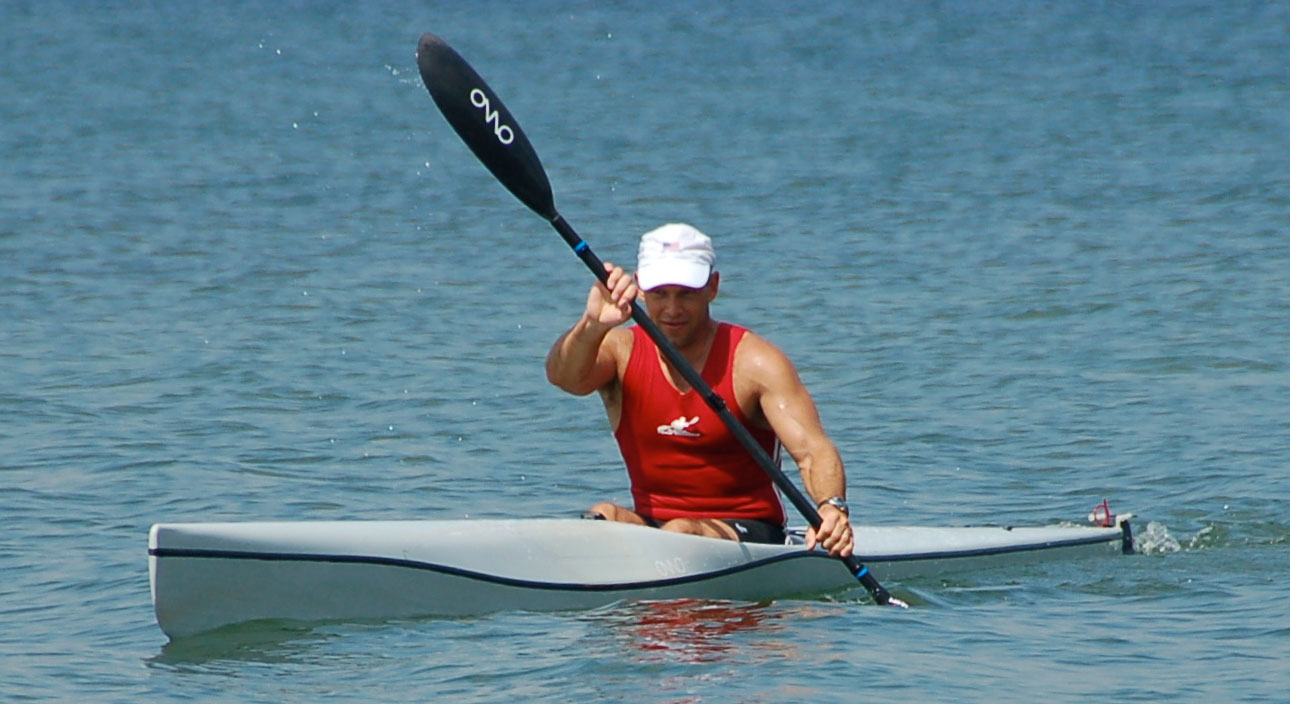

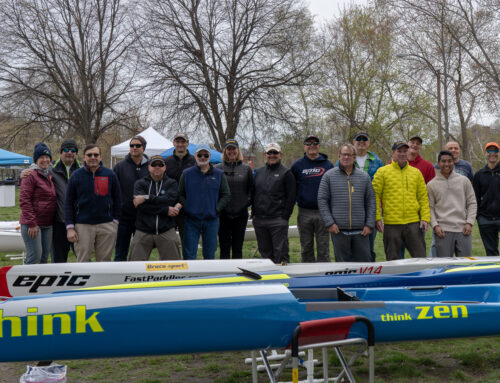
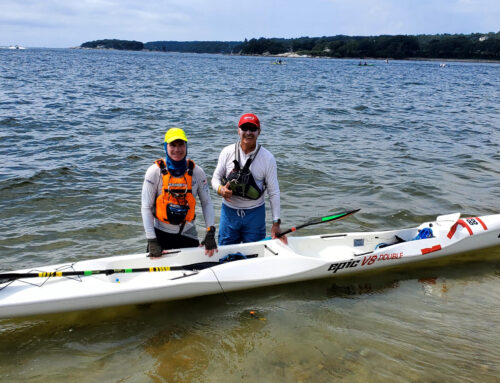
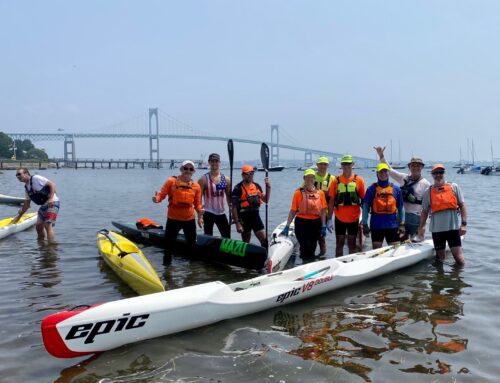
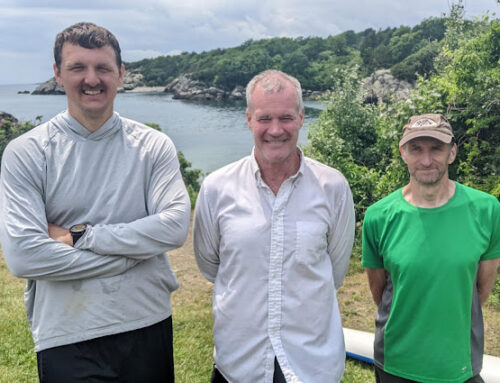
Leave A Comment
You must be logged in to post a comment.